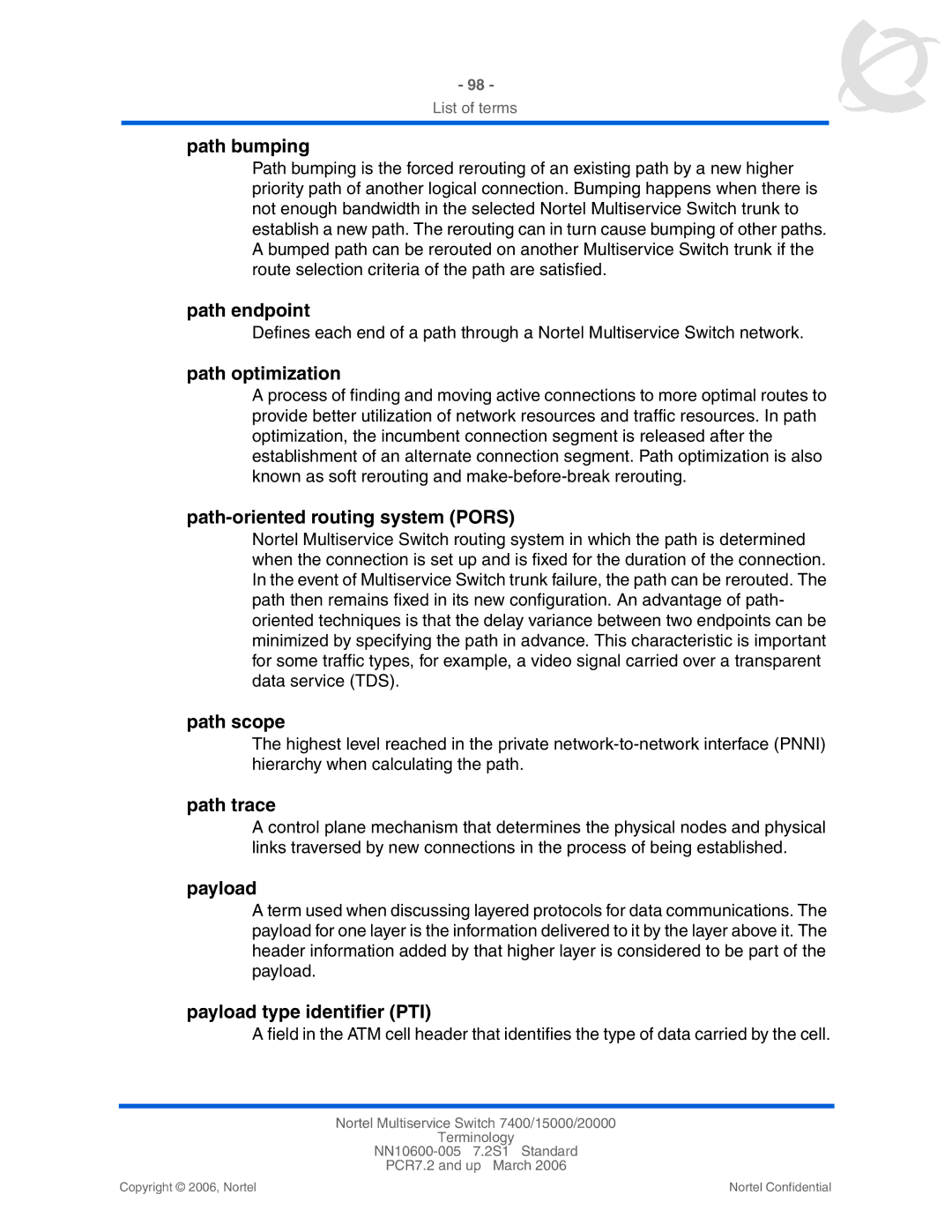
- 98 -
List of terms
path bumping
Path bumping is the forced rerouting of an existing path by a new higher priority path of another logical connection. Bumping happens when there is not enough bandwidth in the selected Nortel Multiservice Switch trunk to establish a new path. The rerouting can in turn cause bumping of other paths. A bumped path can be rerouted on another Multiservice Switch trunk if the route selection criteria of the path are satisfied.
path endpoint
Defines each end of a path through a Nortel Multiservice Switch network.
path optimization
A process of finding and moving active connections to more optimal routes to provide better utilization of network resources and traffic resources. In path optimization, the incumbent connection segment is released after the establishment of an alternate connection segment. Path optimization is also known as soft rerouting and
path-oriented routing system (PORS)
Nortel Multiservice Switch routing system in which the path is determined when the connection is set up and is fixed for the duration of the connection. In the event of Multiservice Switch trunk failure, the path can be rerouted. The path then remains fixed in its new configuration. An advantage of path- oriented techniques is that the delay variance between two endpoints can be minimized by specifying the path in advance. This characteristic is important for some traffic types, for example, a video signal carried over a transparent data service (TDS).
path scope
The highest level reached in the private
path trace
A control plane mechanism that determines the physical nodes and physical links traversed by new connections in the process of being established.
payload
A term used when discussing layered protocols for data communications. The payload for one layer is the information delivered to it by the layer above it. The header information added by that higher layer is considered to be part of the payload.
payload type identifier (PTI)
A field in the ATM cell header that identifies the type of data carried by the cell.
Nortel Multiservice Switch 7400/15000/20000
Terminology
PCR7.2 and up March 2006
Copyright © 2006, Nortel | Nortel Confidential |
